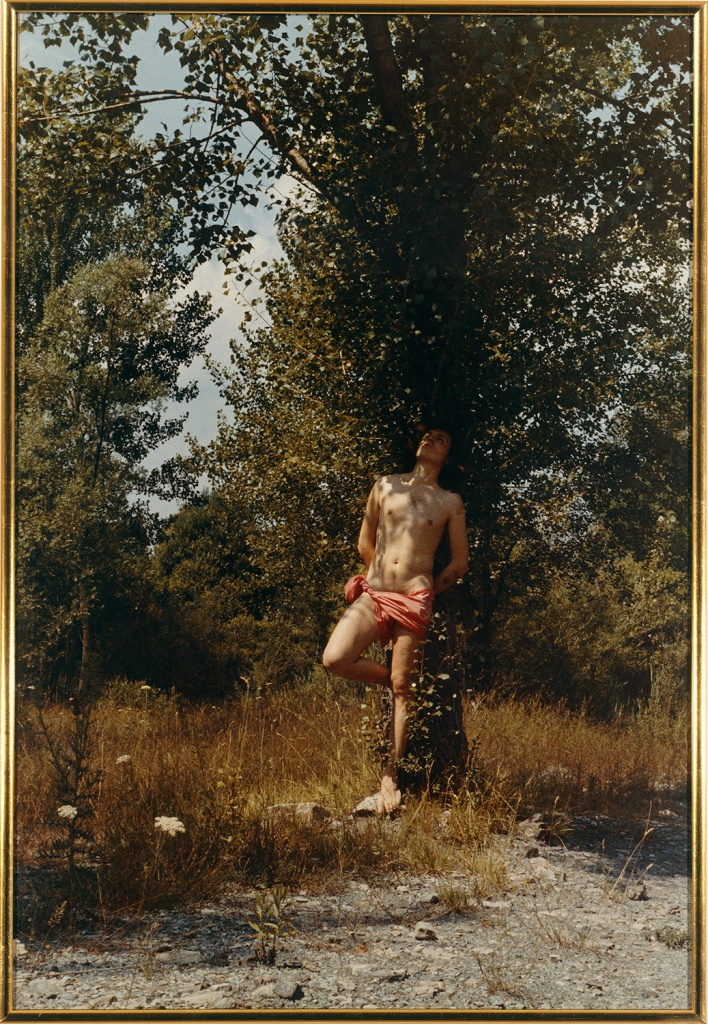
Performing History
"While Bruce Naumann leapt and danced inside a masking tape square in his studio, Ontani fainted until he dropped in the studio Bentivoglio in Bologna at almost the same time. When Gilbert & George entered the scene with the singing sculpture without a change of dress, Ontani had just transformed himself into a faithless angel for his first tableau vivant. When the young Cindy Sherman began to transfigure herself into her characters, the mature Luigi had been dabbling for years in his journeys of identity without the fear, however, of concealing his person within the mask.”
With these words curator and art critic Luca Lo Pinto positions the work of Luigi Ontani (Italy, 1943) in a certain timeline of performance practices, developed from the mid-sixties until the end of nineties. Ontani started to make his famous tableaux vivants in 1969 with Teofania (‘Theophany’, a visible manifestation of a deity to a human person), a picture in which he is represented as an angel. These "fixed performances" or "live paintings" are remnants from the legendary Reinassance performances, similar to Pasolini’s references to Florentine Mannerist paintings in the movie La Ricotta.
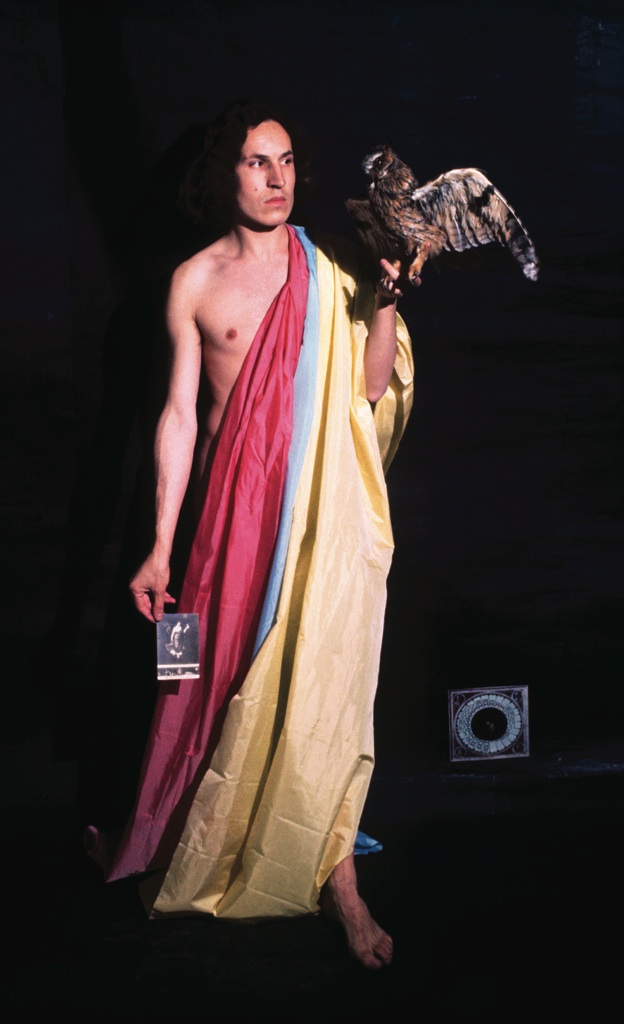
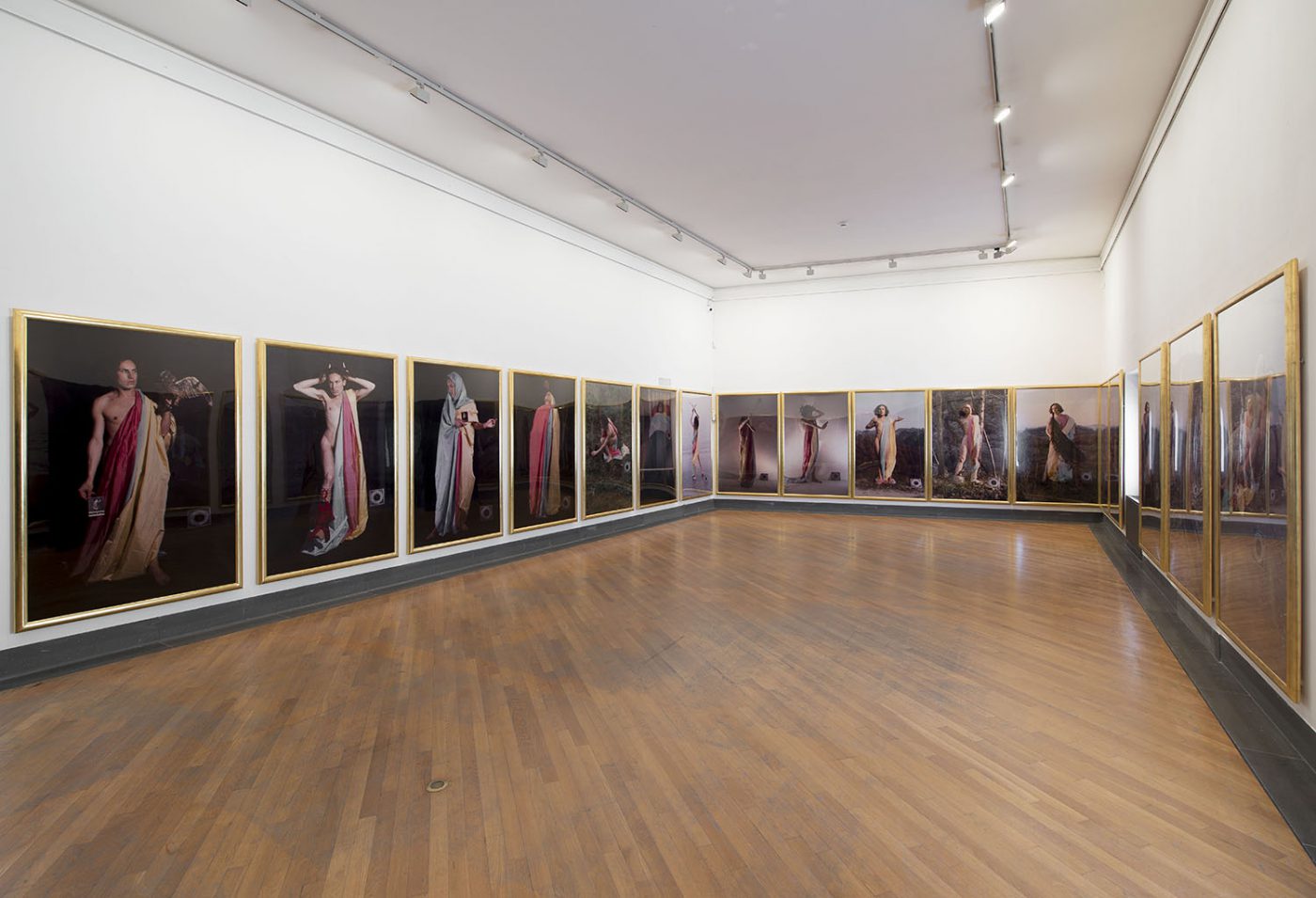
At the er" "SIMULÀCRUM" “amò exhibition at Gamec (October 3 – January 11), several of Ontani’s series are shown. One of these is Prigioni (‘Prisons’), from 1970, executed in six almost life-size pictures, in which the artist impersonates the famous unfinished sculptures by Michelangelo from the tomb of pope Julius II. A second series comprises twenty four pictures, each referring to an hour of the day. This work, entitled Ore (1975), shows the author interacting with intriguing props like stuffed animals (a crocodile, a swan, an owl and a seagull), a triangular mirror, a traditional devil puppet, or daily objects, all of them referring to a particular characteristic or symbol of a moment of the day.
The last series in the show is a group of four round pictures linked to various state of minds, vices and virtues, as described in Iconologia, a sixteenth-century text by iconographer Cesare Ripa. The representation of ‘distraction’, for example, is a woman surrounded by study objects with a butterfly around her head.

Having never attended an art school his experience was coming from what life offered to him. His first encounter with contemporary art was in Turin, where he moved to attend his military service. At Notizie gallery he learned about the work of Mario and Marisa Merz, Luciano Fabro, Pio Manzoni and Lucio Fontana, amongst others.
His first super 8 video was shot in Bologna, at studio Bentivoglio, in 1969. Svenimenti (‘Faints’), documents a series of exercises practiced together with Pier Giovanni Castagnoli, during which, each time Ontani would drop, his partner had to slap on his face to revive him. Disguise and narcissism are the most evident features of his visual language. Different from the body artists of the same period, for his ‘delicacy, playfulness and infantile perversity’, his first nude portraits were taken in the countryside of his hometown.
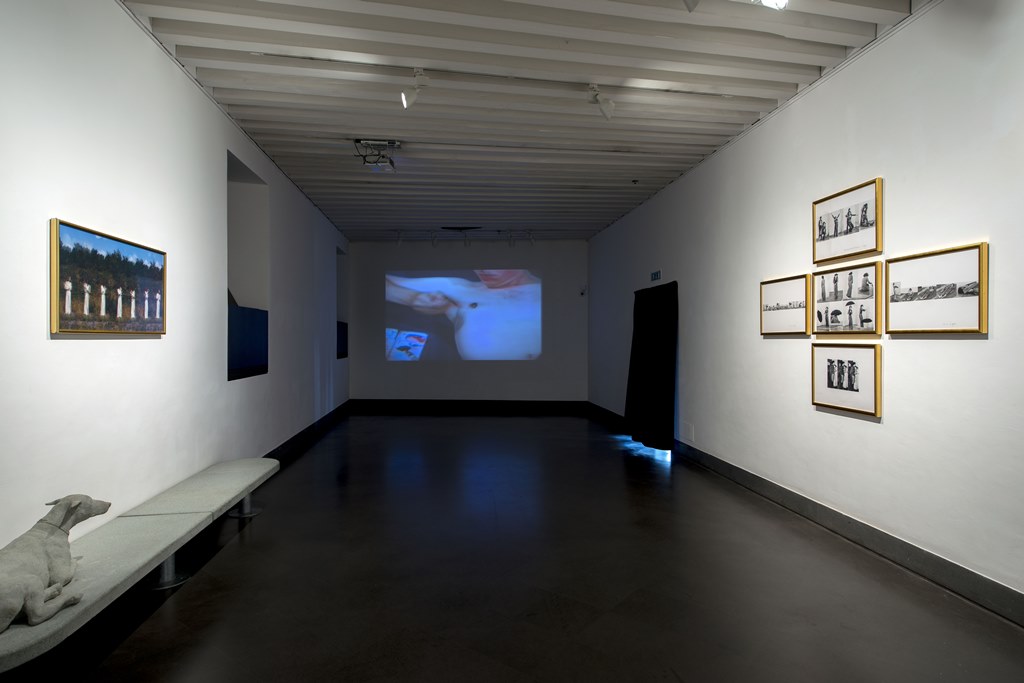
Besides photography, the techniques used by Ontani comprise a wide range of other materials or variations, from ceramic to plaster, from hand-coloured to lenticular photographs. We could say that the artist started with performance, then experimented with photography and finally went back to traditional techniques like painting and sculpture, which he envisioned under the influence of his personal experience.

Through a playful elaboration and reinvention of aspects of archaeology, anthropology, mythology, as well as fantasy or religion, the artist uses the hybridization of elements as a key element to conceive his pieces. This happens for example when his contemplative interpretation of exotic cultures, discovered in the many trips he did, meets the metaphor and metonymy used as a linguistic tool in the titles of his compositions.
San Sebastiano Indiano, (‘Indian Saint Sebastian’) made in Jaipur in 1976, also shown in the exhibition at Gamec, is a case where this kind of hybridization is used. The martyr in this work symbolizes the contemporary artist, who is punished by a public that is not able to understand his openness towards new horizons, suggested by the reference to India.
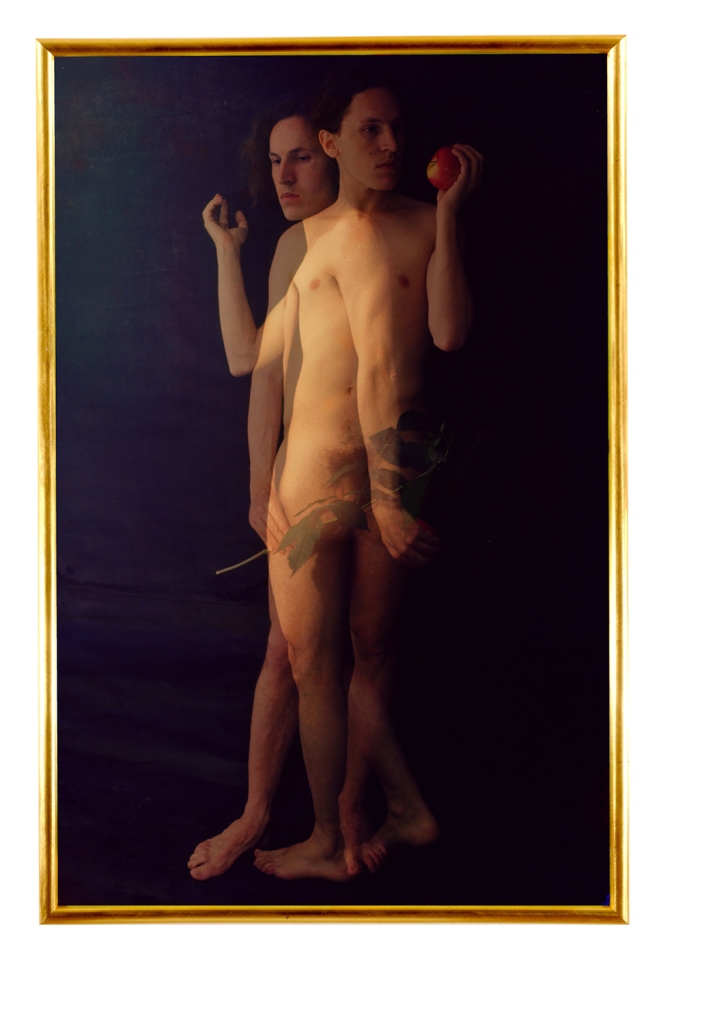
Ontani uses his own body and face to personify historic, mythological, literary and popular themes, as well as rhetorical figures from the history of art. His interpretations of demigods of antiquity and mythical figures, like Leonardo and Raphael, are, as art critic Robert Nickas writes in his book The Art of Performance, a way to inscribe himself in the lineage of "noble fathers of all the successive performance artists”.
LEES OOK METROPOLIS M NR 6 2014/2015 DEC-JAN ONZICHTBAAR & THE CURATED SELF
Emma I. Panza


